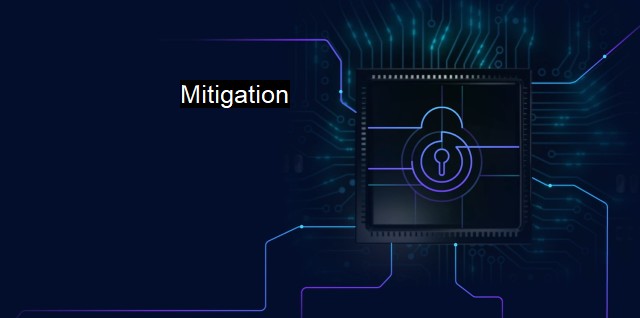What is Mitigation?
The Importance of Mitigation Strategies in Cybersecurity and Antivirus Attacks: Preventing Data Loss and Ensuring System Availability
Mitigation, with serves as a proactive strategy to lessen or neutralize the effects of cyber threats before they result in significant damage. Mitigation is an integral part of a comprehensive cybersecurity framework aiming to prevent, detect, and respond to various security threats, including viruses, malware, ransomware, and other types of cyber attacks.Mitigation steps in when preventive measures such as firewalls, encryption, and secure passwords may fail to stop the threats entirely. These threats can come via multiple channels – emails, suspicious websites, or as vulnerabilities in applications or operating systems. by mitigating efficiently, businesses can limit damage, reduce downtime, and accelerate the recovery.
Cybersecurity mitigation activities cover a broad spectrum, spanning from identifying vulnerabilities in the system to patch management, implementing effective defense strategies, and active monitoring and response procedures. All these activities aim to reduce the incident's threat level, limit damage, and lower the risk of future attacks.
To understand the scope of mitigation effectiveness, one should look at it as a layered defensive measure. This concept, also known as defense in depth, relies on the strategy that multiple levels of security controls and measures deployed across an organization's IT infrastructure can provide a reliable defense.
Mitigation, therefore, sits as one of the layers in this security model — an active player involved in neutralizing and nullifying risks, reducing vulnerabilities, and lessening harm. Systems may still get infiltrated, but an effective mitigation plan ensures that impacts, invasion degrees, and subsequent threats remain minimal.
One of the critical stages in cybersecurity mitigation is identifying vulnerabilities. Through regular monitoring and auditing, businesses can discover possible security weaknesses in their systems, hardware, or software. Once vulnerabilities are identified, they could then devise strategies not only to defend with immediate fixes but also to reduce the likelihood of future incidents.
Patch management also plays a vital role in cybersecurity mitigation. Patches are software providers' updates meant to fix security vulnerabilities in their software products. Neglecting patch management leaves systems open to risks as hackers are often on the lookout for unpatched software, which they can exploit. Keeping all software regularly updated can play a significant role in reducing cyber threats.
Apart from these, educating employees about the importance of cybersecurity and best practices is another critical element of mitigation. Employees who are aware of cyber threats and know how to handle them significantly reduce the likelihood of human error, which is often an entry point for many cyber attacks.
The concept of mitigation is not without its challenges. One of the significant hurdles companies face is staying updated with the evolving landscape of cybersecurity threats. Hackers are becoming more sophisticated in their methods, making it challenging to keep defenses up-to-date.
Despite these challenges, mitigation remains an essential component of an effective cybersecurity strategy. It is a continuous process embedded in an organization's risk management plan. Therefore, constant development and updates to the company's mitigation strategies are crucial in maintaining an effective defense against the ever-increasing amount of cybersecurity threats.
To sum it up, mitigation in cybersecurity is about exhibiting a proactive stance towards dealing with potential and actual cyber threats. By successfully identifying vulnerabilities, providing timely fixes, maintaining updates, educating the workforce, and employing a regularly revisited mitigation strategy, companies can lessen the risks, minimize the damage, and reduce the significant impact that security breaches and cyber attacks could potentially cause to the growth and trust in their business. Cybersecurity mitigation is not a one-and-done solution, but an ongoing endeavor that calls for continuous vigilance and proactivity.

Mitigation FAQs
What is mitigation in cybersecurity?
Mitigation in cybersecurity refers to the actions taken to reduce or prevent the impact of a security incident. It involves identifying and addressing vulnerabilities in the system, implementing security controls to prevent attacks or limit their impact, and developing response plans to minimize damage if an incident occurs.What are some common mitigation strategies in antivirus software?
Some common mitigation strategies in antivirus software include signature-based detection, heuristics-based detection, behavioral analysis, sandboxing, and machine learning. These strategies are designed to detect and block known and unknown malware, reduce false positives, and improve the overall effectiveness of the antivirus solution.Why is mitigation important in cybersecurity?
Mitigation is important in cybersecurity because it helps organizations minimize the impact of security incidents and protect their assets, data, and reputation. Without effective mitigation strategies, cyber attacks can cause significant damage to an organization's operations, finances, and customer trust.What are some best practices for implementing mitigation strategies in cybersecurity?
Some best practices for implementing mitigation strategies in cybersecurity include regularly assessing and addressing vulnerabilities, keeping software and systems up-to-date, implementing a layered defense approach, training employees on cybersecurity awareness, and having a robust incident response plan in place. It is also important to continuously monitor and improve the effectiveness of mitigation strategies to stay ahead of emerging threats.| | A | | | B | | | C | | | D | | | E | | | F | | | G | | | H | | | I | | | J | | | K | | | L | | | M | |
| | N | | | O | | | P | | | Q | | | R | | | S | | | T | | | U | | | V | | | W | | | X | | | Y | | | Z | |
| | 1 | | | 2 | | | 3 | | | 4 | | | 7 | | | 8 | | |||||||